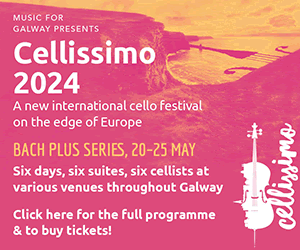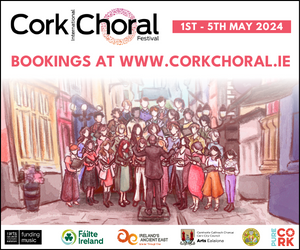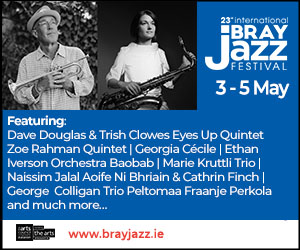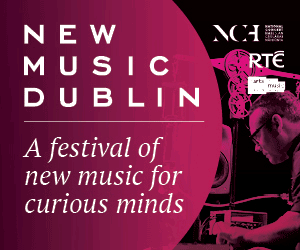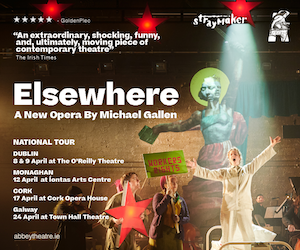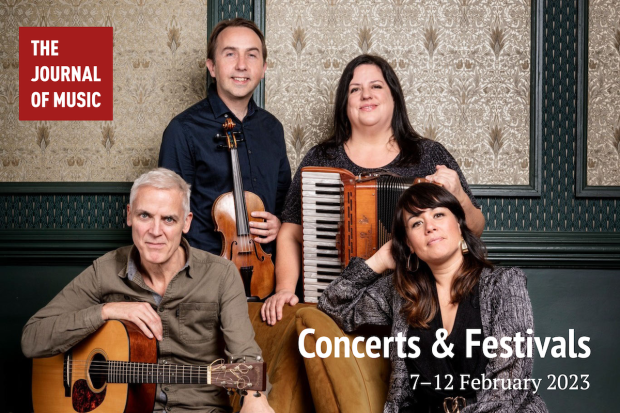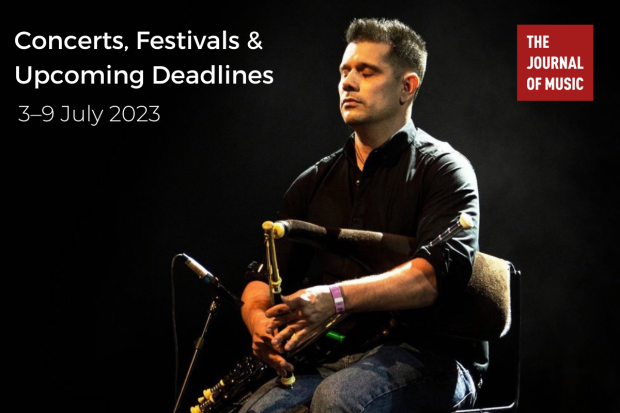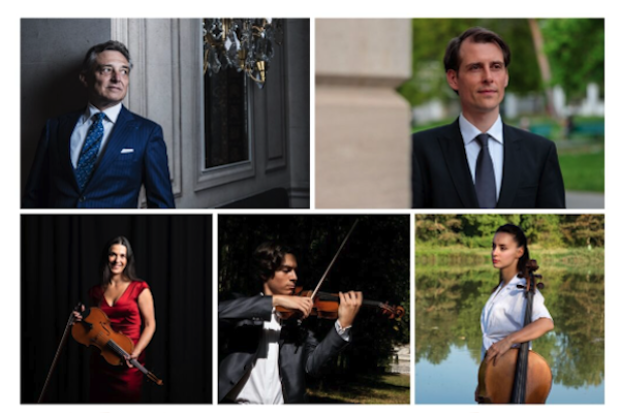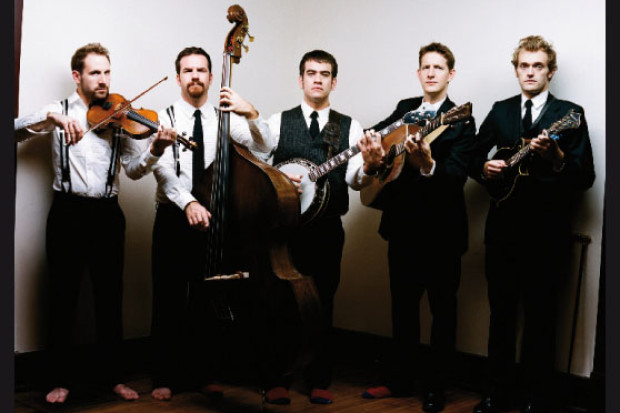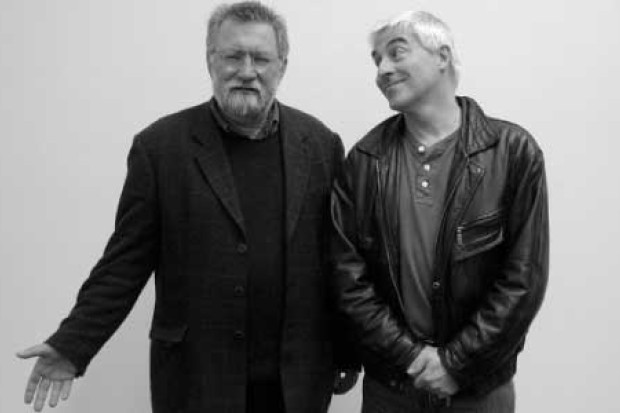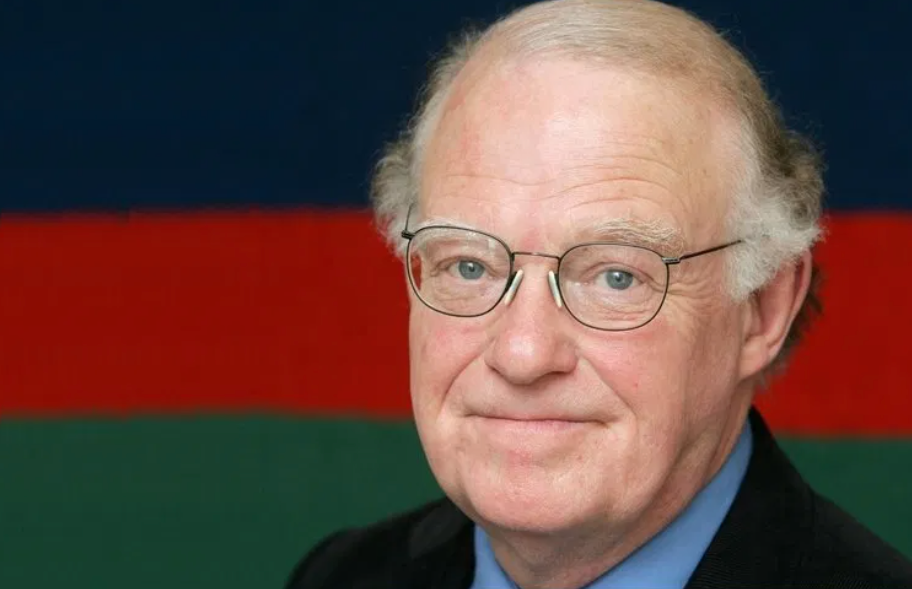
Tim Thurston
Breaking the Sound Barriers: Why all the musical boxes?
I found my attention wandering in the National Concert Hall recently. Looking down from the balcony, I wondered yet again why the likelihood of my seeing any of the audience in Whelan’s, Vicar Street or Mother Redcap’s was so slight. Why is it that so many record collections seem to reflect such a limited range of the musical spectrum? It seems that if you are in one particular musical box then it is highly unlikely that you will enter another for any more than the most fleeting visit. The traditional music fans have their box too, and the jazz buffs, and lovers of brass bands, rock in all its many guises, opera light and heavy — they all have their own sub-culture, often their own language. Indeed within the boxes there are many rooms further subdividing, further shutting off, further impoverishing listeners and performers alike.
However convenient it may be to have labels to describe musical forms, it seems to me that it is commercial interests that are principally served by these divisions. Often contemporary music defies our attempts to label it; maybe such uncategorisable music suffers commercially through the inability to pigeon-hole it, to find a ‘market focus’, but it retains its individuality.
My musical journey has been an unusual one. I came, as they say, from a musical family, steeped in the classical tradition. However, in spite of school exposure twice a day to the joys of the Methodist Hymn Book, and various attempts by long-suffering music teachers, the genes were not strong enough to overcome my frustration at having to abide by the written note. Maybe the seeds of a contrasting pattern of musical development were sown — some might say the rot set in — when my music lessons at school included singing Judas in Bach’s St Matthew Passion and learning the saxophone borrowed appropriately from a boy called Parker! In the late 50s my stamp collection was sold to purchase the Gerry Mulligan Californian Concerts and my visits to King’s College Chapel to listen to Byrd and Tallis were supplemented with surreptitious dives into Cambridge jazz clubs and the odd daring foray into the equally cool world of Bartok string quartets. Dublin in the 60s steadied me somewhat — plenty of choral singing and the occasional visit to a gig in Slattery’s or the Brazen Head — and Stravinsky and Ellington gracing the Dublin City Cinemas. Then the early music revival hit me, and Harnoncourt, Beckett, Munrow, Bruggen and Leonhardt could do no wrong. The excitement of new musical experiences from Bach and before left little time for engagement with contemporary, romantic or even classical forms — my delight in improvisation was met by the delectable embellishments of the baroque — and by the end of the 80s I was deeply involved in the early music box, promoting concerts, writing, singing, broadcasting and listening.
Then, in 1990, I was cajoled into attending a concert by a Norwegian saxophone player — that seemed like a contradiction in terms for a start — and in the Royal Marine Hotel in Dun Laoghaire too. What an unlikely place for a reconversion experience! Yet I was overwhelmed by the richness and depth of the music, the subtlety, complexity, humour and surprise, the beauty of the soundscape and electric excitement of the performance. What on earth had happened to jazz since Gerry Mulligan in 1958? Well, the answer turned out to be nothing less than a sea change, a bursting out from the roots of New Orleans and opening to the widest array of musical influences: the western classical tradition, folk and popular musics of all sorts. The mix that evening was from Jan Garbarek and the Norwegian folk tradition (shot through with an Indian flavour — he frequently plays with Asian players) and the astonishing percussion of Nana Vasconcelos from Brazil. Yes, one can be mesmerised by the rhythmic shaking of two bunches of shells. Eberhard Weber played the electric bass between his legs like a viol — rich, deep bowed sounds then sudden plucked runs of dazzling virtuosity. Bach often putting in an appearance, and Debussy too, highly organised, much orchestrated, but with many spaces for improvisation, allowing for the unique jazz experience: being close to the spontaneous creative process. That memorable night led me to many journeys along many jazz roads and, eventually, a chance to share my delight of discovery for 13 weeks every year or so with listeners to Con Tempo — at that time FM3’s precious weekly jazz allowance.
I am convinced that of all contemporary music, that under the broad umbrella of jazz can be the most enjoyable for the open-minded music lover, challenging yet accessible, exciting, surprising and true to its time.
What has further intrigued me has been my response to other music since this experience. My engagement has broadened and intensified and my fascination with music of many sorts has grown. I could not have imagined opening myself to the byways of nineteenth-century music, to the music of South America, Cuba, Africa (from Somalia to Mozambique) and to contemporary music of all sorts, and the delights of early music are sharpened. They say that one cannot listen to Bach not having heard Beethoven. I would go further and say that one’s appreciation of classical genres in general is hugely enhanced by a familiarity with the language of traditional and improvised musics.
The exclusive attitude and often peremptory dismissal of music in other boxes by so many people firmly entrenched in theirs saddens me greatly. ‘I don’t understand Jazz,’ was a common reaction to my apparent change in musical passions; it wasn’t a change of course, simply an expansion. My response is that, for most of us, jazz — indeed any music — is not there to be understood but to be felt; it’s a matter of the heart rather than the head. It isn’t necessary to ‘understand’ in order to appreciate, simply to be open to the possibility of enjoyment. Of course, knowledge aids appreciation, and the joy of getting to know the music and the story behind it, the instruments, the musicians, becoming familiar with new sounds and musical language, is immense. I don’t actually believe that people do expect to understand — the more likely block as far as jazz is concerned is the clichéd image of the music: of booze and drugs, of smoke filled clubs, or perhaps straw hats, honky tonk, repetitive pounding rhythm and a total absence of subtlety and surprise, so far removed from the reality of the jazz of today. Yet what is the jazz of today? If we think of the Irish jazz scene alone we have the bizarre image of a music encompassing Paddy Cole, Louis Stewart, Ronan Guilfoyle and Barry Guy!! If only there were one label — ‘Music’.
And we music buffs don’t help either. What we say — and how we say it — often tends to reinforce the walls around the boxes, re-emphasising the elitism and excluding so many from its enrichment. In our presence, as we compare Karajan with Abbado or Dizzy with Miles, as we dismiss one composer and laud another, is it any wonder that the neophyte on the fringes is seriously intimidated and scuttles back into his box?
It should be made as easy as possible for music lovers to expand their musical horizons, to bring to each new musical experience a totally open mind, with no expectations, no feeling that they ‘ought’ to like it or indeed have to make any particular statements about the experience. If they have enjoyed it, then that’s great, if not, well they’ve given it a chance to say something to them — and it has failed. On they go to something else.
I wonder why we are so much more narrow minded in regards to music compared to, say, literature; most avid readers would be quite comfortable in moving from Dickens to Grass, from Milton to Heaney. The theatre-goer wouldn’t be limited to Restoration Comedy or the Theatre of the Absurd. There are I think some signs of hope in the area of broadcasting. John Kelly’s splendid musical contrasts and eclectic segues, and the Blue of the Night on Lyric FM (recently heralded in Time magazine), for the rich mix of Dowland, Ella Fitzgerald and John Cage as happy bedfellows.
As Thelonious Monk said ‘Writing about music is like dancing about architecture’. All music should be given an opportunity to speak for itself — let any introduction at least be more to excite and enthuse than to explain or educate. Let’s forget words like good or bad, better or worse, and work on the premise that there are only two things you can say about music in all its wonderful manifestations: ‘I like it’ or ‘I don’t like it’ — and you can change your mind!
Published on 1 May 2001
Tim Thurston is a writer, broadcaster and lecturer on music. He presents Gloria, a weekly programme of sacred music on Lyric FM.







